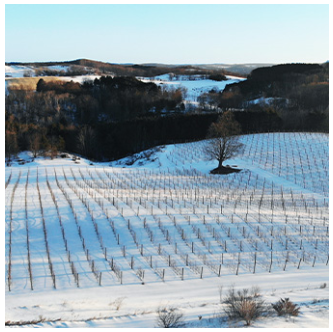Strategy, Action Plan, Goals & Objectives
POTENTIAL PROJECTS
The Action Plan and Strategic Direction outline an agreed upon vision with a set of goals and objectives that strive to adjust policy, inform local units of government, connect businesses with supporting entities, and improve efforts in areas of housing, education, childcare, talent, infrastructure and business development among others.
METHODOLOGY
PROCESS
As a continuation from the SWOT Analysis stage of the process, the Action Plan was reliant upon the input of the Regional Task Force Members. The SWOT Analysis led to the drafting of goals and objectives that were supported by strengths in the region and could be expanded upon by opportunities. The items did meet several of the weaknesses and threats head-on, but rather than dwell on solving issues borne of those categories, it is known that successful implementation efforts leverage what is successful and achievable.
A meeting was called of the Regional Task Force and the members were provided a draft of the goals and objectives. Constructive criticism was encouraged of the group and necessary revisions were outlined for both structure and content. Staff took the information provided by the Task Force and synthesized it into drafted goals and objectives. A ranking sheet was created that would be provided to the Task Force Members in order to prioritize the goals and rank the objectives, the top 5 goals were sought of each group member.

IMPLEMENTATION STRATEGY
-
- One of the most important aspects of this process and document is the ability for implementation of the goals and more specifically the objectives contained within. The implementation strategy is reliant upon the plan participants and other regional stakeholders including local government officials, non-profits, educators, business and industry owners in taking ownership of goals and objectives that they can reasonably find measures for support and success in gaining traction for implementation. The strategy is reliant upon the selecting of priority goals, defining responsible parties and setting a reasonable time-frame.
TALENT & WORKFORCE DEVELOPMENT
The region’s workforce will be prepared to meet industry demands at both the regional and global level. Individuals seeking to develop employable skill sets will have ample resources to do so. Community members with an array of backgrounds and interests will have opportunities to participate in and contribute to the regional economy
BUSINESS ATTRACTION, DEVELOPMENT & RETENTION
The Northwest Lower Michigan region will be a highly sought after location for businesses to start up and grow. Businesses from other parts of the country will see the clear benefits of relocating to the region. Through policies, incentives and collaborative partnerships, the business community will thrive in an ever-changing global economy. There will be a strong relationship between the public and private sector.
HOUSING
Housing in Northwest Lower Michigan will offer a variety of affordable housing types. Local land use regulations, public-private partnerships and resource allocations will remove housing shortages as a barrier to economic growth. Community members representing various ages, incomes and lifestyles will be able to find housing to meet their needs.
CHILD CARE
The region’s employees will not have to consider child care as a barrier to participation in the workforce. Quality child care will be affordable for a range of Page 19 income levels and accessible throughout the region.
GOVERNANCE
The region’s economy will be supported by effective, well-trained local officials. Governmental processes will encourage public participation, will follow legal and ethical guidelines and will promote sustainable economic development practices. Local governments, counties, Networks Northwest, the State of Michigan and the federal government will cooperate in identifying and remedying the region’s economic shortcomings.
TRANSPORTATION & MOBILITY
Transportation in the region will be safe and efficient. Road networks will be wellmaintained and will support motorized and non-motorized mobility. The region’s points of interest will be accessible without the need for a personal vehicle.
INFRASTRUCTURE
Roads, ports, rail lines, dams and broadband will all be continuously maintained and improved to support commerce. The region’s infrastructure will be efficiently sited and managed.

CLIMATE CHANGE
Roads, ports, rail lines, dams and broadband will all be continuously maintained and improved to support commerce. The region’s infrastructure will be efficiently sited and managed.

LAND USE
Land use patterns in the region will support economic, social and environmental sustainability. The region will maintain its natural character while meeting the demands of a growing population. Spatial efficiencies will ensure that infrastructure costs, travel times and development in greenfields are all reduced. The region’s built environment will have as little impact as possible on nature.



